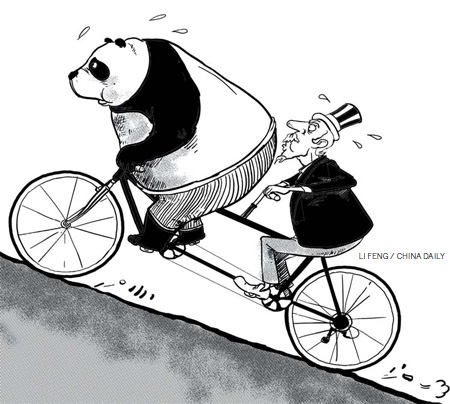Achieving green goals together

Accounting for more than 40 percent of the world's greenhouse gas emissions, the United States and China should work together to prevent runaway climate change and demonstrate to the world sustainable, low-carbon development models. As emissions around the world continue to increase, collaboration between the two countries in key areas such as energy efficiency and clean energy is essential to stabilize the Earth's climate.
The US and China should use the ongoing UN climate change conference in Cancun, Mexico, to re-affirm their commitment to addressing their domestic emissions and improving reporting and transparency on their domestic actions. They should take steps to become a model for international collaboration in the pursuit of low-carbon solutions and the resulting economic, social and environmental benefits.
Having worked in China for the last 15 years on projects to improve the efficiency of China's industries and buildings, and develop clean energy, our organization, the Natural Resources Defense Council (NRDC), has witnessed first-hand the surge in recent years in national and local policies to adopt efficient, low-carbon technologies.
Textile mills consume and pollute as much as 200 tons of water to make one ton of fabric, and emit considerable volume of carbon dioxide (CO2). The NRDC's "responsible sourcing initiative" techniques not only reduce water pollution and energy use, but also help textile mills run more efficiently and use fewer resources, saving companies significant amount of money.
If just 100 small- to medium-sized textile mills implement our recommended improvements, China would save more than 16 million tons of water a year, enough to provide 12.4 million people with drinking water for a year. The practices can also eliminate nearly 1 million tons of CO2 a year, about the same volume that 172,000 cars emit in one year.
In November 2009, President Hu Jintao and US President Barack Obama strengthened China-US collaboration on clean energy through a broad set of initiatives, including the establishment of a joint Clean Energy Research Center, which will focus initially on building efficiency, carbon capture and storage, and electric vehicles (NRDC is a member of the building efficiency consortium).
The US-China clean energy initiatives, no doubt, will be fruitful and have meaningful economic and environmental impacts far beyond the investments that each country makes.
Despite its significant efforts and achievements in improving energy efficiency and addressing its emissions over the last five years, China has not always got the recognition it deserves. This in part is because other countries do not understand the significant steps that China has been taking to fight climate change, and in part because of the relative lack of transparency of China's energy use and emissions.
The compromise that China and the US reached at the Copenhagen climate conference last year requires developing countries to increase the frequency of their reporting on mitigation actions and emission inventories to every two years, bringing them more in line with the reporting requirements of developed countries. This should help increase mutual understanding and trust among countries, and assure them that each is doing its part to fight climate change.
 0
0 







Go to Forum >>0 Comments